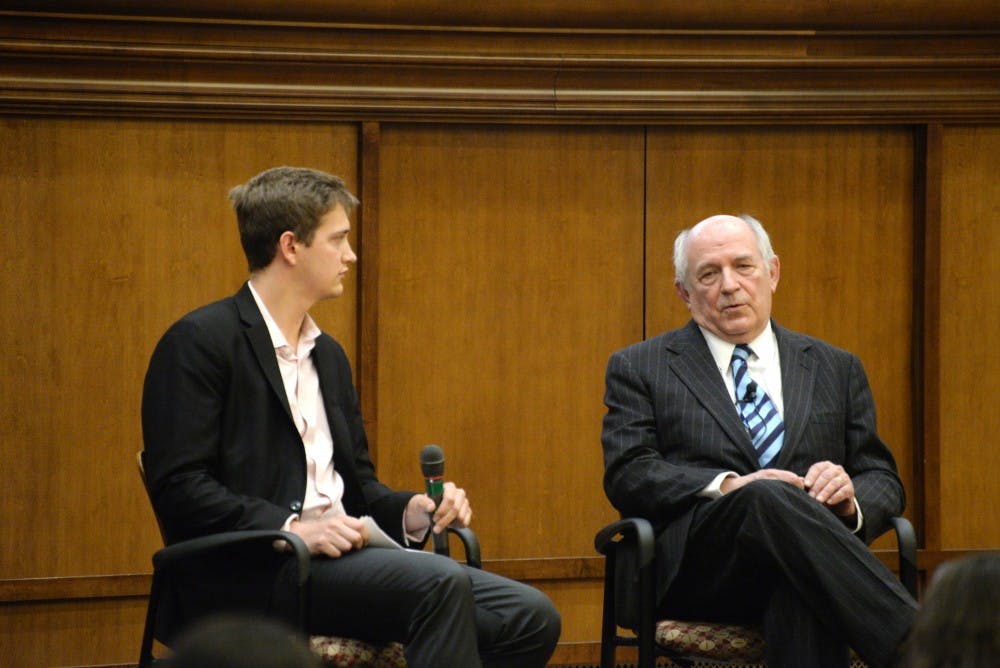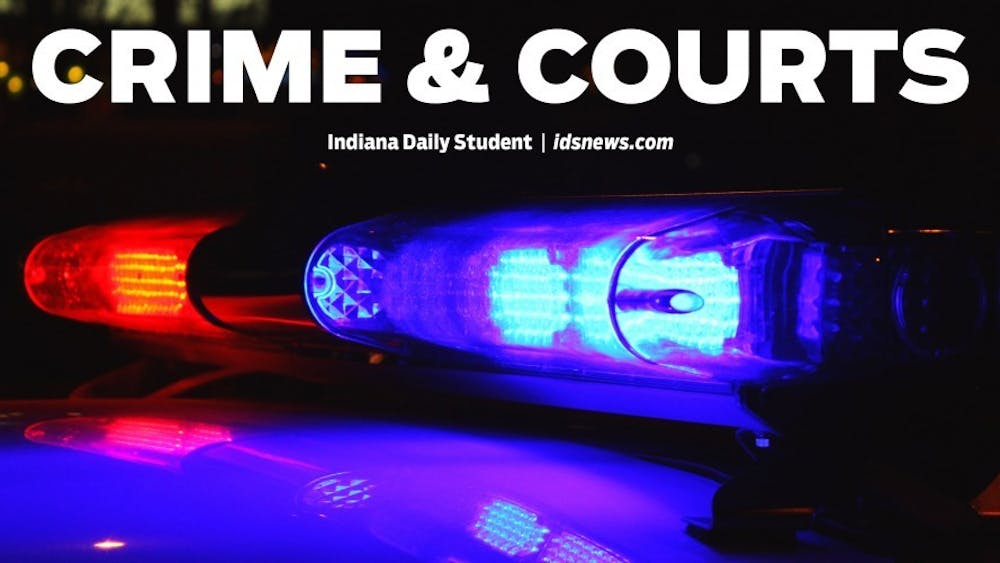When controversial social scientist Charles Murray came to campus April 11, students, faculty and community members picked up their bullhorns and signs for a non-violent protest of his speech. Police officers brought their riot gear and zip ties in case the planned peaceful protest turned violent. Provost Lauren Robel and others in Bryan Hall watched the protesters fan out across the path at the Sample Gates.
Across the country, controversial speakers like Murray are catalyzing the debate between free speech and more correct speech, that keeps marginalized students from feeling attacked. At Middlebury College, a similar situation occurred where protests turned violent and Murray’s speech was cancelled. Protesters at IU said Murray’s speaking on campus stretches past the speaker to the University’s disrespecting minority students. The IU administration said the protests went from protecting marginalized students to shutting down the ideas of an academic institution — free speech and critique.
"There are many ways an academic institution, especially a state institution of higher education, which is bound by the First Amendment, can react to controversial speech,” Robel said in an opinion editorial published in the Indiana Daily Student. “We can do what IU’s Political and Civic Engagement Program did: teach and discuss. Or do what the scholars who scrutinized The Bell Curve’s social science did: interrogate the reasoning, or the evidence, undergirding the claims, and disprove them if they are wrong.”
Inside Presidents Hall last Tuesday, Murray spoke about the new upper class and the resulting election of Donald Trump. Murray’s notoriety came from his 1994 co-authored book, “The Bell Curve.” In it, Murray ties IQ scores of different races to genetics.
The University did not bring Murray to campus. Students in the American Enterprise Institute were responsible for bringing him and finding him a venue to speak. Robel said the group had originally planned to have him in a classroom in an academic building, but after the violent protests of Middlebury, they moved him to a space where more protection would be possible.
Outside the limestone walls of Franklin Hall, hundreds of protesters gathered behind metal barricades, shouted obscenities and chants, banged pots and danced to music. Protesters said they had no intention of violence. They just wanted to let Murray know how they felt.
“We wanted to reaffirm our right to protest,” said Abby Ang, IU English Grad Solidarity Coalition protest co-organizer.
Across from Franklin Hall, Robel, Executive Vice President for University Academic Affairs John Applegate and others looked at the protests unfolding from Bryan Hall. Robel said they expected a scene like this after the protests at Middlebury.
“People who think the right response of an academic institution to a speech that is controversial or that people disagree with, people who think that the right response is to shut down the speech, I just profoundly think that’s wrong,” she said.
Robel said police are trained to deal with peaceful protests and the administration supports peaceful protests and the students’ right to assemble. In situations like this one, where a variety of interests and opinions are at odds with each other, Robel said the administration oversees balancing those interests to the best of its abilities.
Those interests take a variety of forms that conflict. There’s the ideological minority group that brought a controversial speaker to campus balanced by the marginalized students who were offended. There’s the speaker’s right to free speech which challenges the University’s commitment to diversity, community and rejection of bigotry all while the protesters’ still retain the right to assemble.
The IU community had to grapple with where the line between free speech and controlled speech lay. The University had to draw the line for acting as an academic institution, providing students with opportunities for ideologically challenging speech, and protecting minority students who may be offended by such speech. Administrators and protesters toed the line of where Murray’s and the protesters’ rights to free speech lay.
“Yes, Murray has the freedom to be a bigot, but we also have the freedom to inform the public,” said Stanley Njuguna, an officer of Students Against State Violence who attended the protests. “He has the freedom to say what he believes, but he doesn’t have the freedom from the consequences.”
Shadia Siliman, a fourth-year Ph.D. student, said protesting Murray’s speech went beyond just the speech. She said even though he was speaking about his book “Coming Apart,” the same racist rhetoric from “The Bell Curve” was hidden in his other books. She said this type of rhetoric and speech was problematic and harmful to many minority students.
Citing the University’s apparent lack of faculty members of color and failure to declare a sanctuary campus, Siliman said the University had a history of not protecting marginalized students.
Siliman explained this event may have been a first protest for some students, but for many of them it was a breaking point.
“They know that the school has fostered hate and hostility toward marginalized groups,” Siliman said. “They know that this is a sexist, homophobic, racist, ableist institution, and this was just the school confirming for them that those are the values.”
Robel said she was empathetic with students who felt insulted by Murray’s previous books but said his speech on campus was far from hate speech.
She said a lot of students have misconceptions about what he was speaking about on campus and how the University was involved with all of it.
Seventy police officers consisting of IU Police Department officers, Indiana state troopers, and Bloomington Police Department officers stood around Franklin Hall, IUPD Lt. Craig Munroe said. Indiana State Police came to IU ready with riot gear in case things began to look like Middlebury.
“I find it fairly discouraging that the reaction of the people is to threaten,” Robel said. “I just think that’s antithetical to academic inquiry and free speech. You can disagree with what you want to and back it up with reason and evidence, but I don’t see anything that is productive about threats.”






